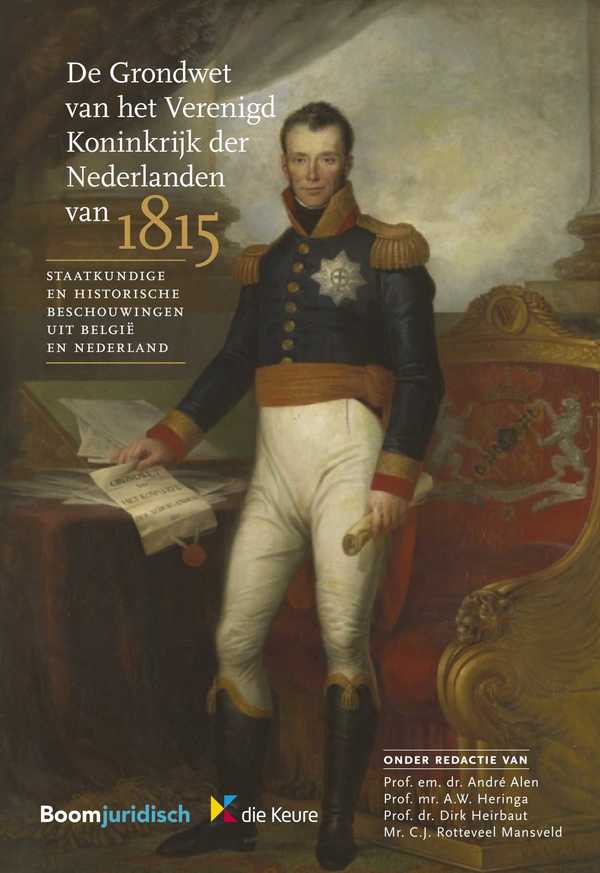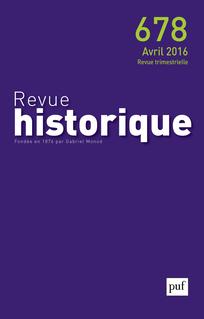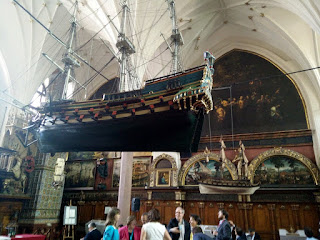(Tallard, source: Wikimedia Commons)
At the occasion of the 318th anniversary of the partition treaties concluded between Louis XIV and William III (King of England, stadholder in the United Provinces), time to enlighten the reader on this essential episode of early modern diplomacy.
The partition treaties of the Spanish Succession, concluded in The Hague on 11 October 1698 (22 CTS 1698) and 25 March 1700 (13 CTS 145), are the perfect example of diplomatic alternatives to war. Although these documents were never executed, they contained the blueprint of a political solution for the problem of the Spanish Succession, which kept Europe in suspense from 1659 to 1715. The treaties illustrate the
ambiguous nature of French foreign policy under Louis XIV (1638-1715). In John C. Rule’s words: “Napoleon dictated, Louis negotiated.” Diplomacy was not the mere handmaiden of the military, but an instrument in its own right. The partition treaties were elaborated under the aegis of Jean-Baptiste Colbert de Torcy (1665-1746), Louis XIV’s last secretary of state for foreign affairs. The works of Arsène Legrelle (1834-1899) rehabilitated this colossal diplomatic undertaking as a masterwork of statecraft.
(image source: Wikimedia Commons; the territories in green are those controlled by the Spanish monarchy at Charles II's decease: the Spanish kingdoms, Naples, Sicily, Sardinia, the Duchy of Milan, the Southern Netherlands; off the map: the Spanish colonies in America and Asia)
France, England and the United Provinces divide the Spanish inheritance
The question of the succession of Spain’s last Habsburg King
Charles II « The Bewitched » (1661-1700) kept Europe in suspense for most of the latter half of the 17th century. Connected to both the House of Bourbon and the junior branch of the House of Habsburg in Vienna, the fate of Charles II’s composite dominions could make the balance tilt decisively in favour of either of both powers. The quarrel between France and Habsburg on Charles’s succession is expressed in a number of legal documents, stretching from 1659 (the marriage of Louis XIV and the Spanish Infanta Maria Teresa (1638-1683)) to 1725 (final reconciliation between the French and Habsburg candidates) and caused a European war of more than a decade, the War of the Spanish Succession (1702-1714).
(Charles II of Spain on the Grand Place in Brussels; This photo is courtesy of TripAdvisor)
The
bipolar nature of the quarrel between French and Austrians was real. Competing factions at Charles II’s court fought for the monarch’s favor in drafting his last will. After his decease in October 1700, an armed struggle was inevitable to decide on an actual partition. However, this logic of confrontation, embodied in battles as Blenheim (1704), Ramillies (1706) or Oudenarde (1708) was paralleled by diplomatic approaches to divide the Spanish inheritance.
(Leopold I of the Holy Roman Empire; Source: Wikimedia Commons)
Louis XIV and Emperor Leopold I (1640-1705), both married to a daughter of Philip IV (1605-1665), Charles II’s predecessor, concluded a
first secret partition treaty on 18 January 1668. Maria Teresa, Louis XIV’s queen, had renounced her rights to the Spanish throne before marrying him. French diplomats
contested the renunciation’s validity, but their arguments were not founded in public law. In the midst of the conflict between France and Spain on the fate of the Spanish Netherlands, and for Austria at a time here the rivalry with the Ottoman Empire necessitated a scaling down of geopolitical ambitions. The agreement foresaw the attribution of the Spanish Netherlands to France.
(Maria Teresa of Spain, Queen of France; source: Wikimedia Commons)
Thirty years later,
the political context had changed fundamentally. The recovery of the major part of Hungary and a successful thrust into the Balkans under Eugene of Savoy (1663-1736) had reinvigorated the Emperor’s position. Leopold I considered he could claim the whole of the Spanish monarchy for one of his sons, archduke Charles. This unilateralist vision found support in both the testament of Philip IV and the ensuing testaments of Charles II. Both monarchs put the unity of the Spanish dominions as a cornerstone of their reasoning.
(the Battle of Zenta, 11 september 1697, whereby Eugene of Savoy beat the Ottoman Army; Source: German Historical Documents)
France, had a double approach. On the one hand, it tried to bargain an agreement on the Spanish Succession with an external player.
William III, King of Great Britain and stadholder in the United Provinces (1650-1702), held the balance between France and Habsburg. Without Imperial participation, Louis XIV negotiated a partition of the Spanish monarchy through his ambassador in London, Tallard. The starting point of William’s reasoning was that the
Treaty of Riswick (signed on 20 September 1697, 21 CTS 347), which brought an end to the Nine Years’ War (1688-1697), was in itself insufficient to guarantee stability in Europe. The quarrel between France and Austria on the Spanish succession was well known, as were the legal arguments on both side. William assured Louis XVI’s ambassador Tallard that “
this quarrel would not be resolved by lawyers, and that it might be feared that one would need to fight by the sword to decide it” (Tallard to Louis XIV, 8 Apr 1698).
(Max II Emanuel of Bavaria, governor-general of the Spanish Netherlands and Elector, source: Wikimedia Commons)
This agreement foresaw in a
three-way split of the Spanish monarchy. Leopold I had wed the infanta Margarita Teresa (1651-1673), half-sister of Louis XIV’s wife Maria Teresa. The daughter from the latter marriage, Maria Antonia (1669-1692) had espoused Maximilian II Emanuel, Elector of Bavaria and governor-general of the Spanish Netherlands since 1691 (1662-1726). Maria Antonia had renounced her rights to the Spanish throne before her marriage to Max Emanuel, but this was not an obstacle for William III.
Their offspring could occupy a middle position between the houses of Bourbon and Habsburg. Joseph Ferdinand of Bavaria was thus the ideal general heir of the Spanish monarchy. The Dauphin (Louis XIV’s eldest son, born in 1662) and archduke Charles of Habsburg (Leopold I’s second son, born in 1685) would then become specific heirs and only receive parts of the Spanish possessions as an exception to the general rule (Louis XIV to Tallard, 24 Jul 1698). Joseph Ferdinand would rule in Spain and the colonies, as well as in the Spanish Netherlands. France and Austria could then divide the Italian possessions. Milan would go to archduke Charles of Austria (art. 7), the Kingdoms of Naples and Sicily, as well as the Tuscan presidia to the Dauphin (art. 6), Louis XIV’s sole surviving legitimate son. Yet, Joseph Ferdinand (1692-1699), Max Emanuel’s son, deceased in Brussels at the age of six on 9 February 1698, rendering the partition treaty inoperable.
(Emperor Charles VI, pretender to the Spanish throne as archduke, 1700-1713)
This three-way split corresponded to a
long conversation in European diplomacy. The fate of the Spanish Netherlands had been uncertain since the sixteenth century. On the one hand, these dominions were the heartland of the Burgundian inheritance of Emperor Charles V (1500-1555). On the other hand, the distance between Spain, its Italian possessions and the Southern Netherlands caused geopolitical and economic woes. The Dutch Republic, invaded by France in 1672 and nearly wiped out at that occasion, was in need of military reassurance at its southern border. Two distinct possibilities were envisaged: either, on the one hand a new dynasty, interested in defending these territories with all available means, or, on the other hand, the right for the Dutch army to use the Spanish Netherlands as a bulwark. Philip II (1527-1598) had appointed his daughter Isabella Claria Eugenia (1566-1633) and her husband Albert of Habsburg (1559-1621) as sovereigns. Yet, their childless marriage could not provide a second Spanish Habsburg branch in Brussels. Joseph Ferdinand was buried near these illustrious predecessors.
%2C_Grand_Pensionary_of_Holland%2C_by_Studio_of_Adriaen_Hanneman.jpg)
(Johan De Witt; source: Wikimedia Commons)
During the
War of Devolution (1667-1668), talks had been going on between Louis XIV and the Dutch pensionary Johan De Witt (1625-1672), drawing on an earlier design by Richelieu and Mazarin to create an independent ‘corps de république’ of cantons, allied to Holland. Another solution would have been an outright partition between France and Holland, as proposed by Richelieu. After the Peace of Riswick, William III obtained the concession from Max Emanuel to place Dutch garrisons in several fortified places in the South (January 1698). These “Barrier” fortresses should slow down or stop French invasion. The option for Joseph Ferdinand of Bavaria was thus in reality a new opportunity to install a new sovereign prince in a region at the crossroads of European armies. Whereas Leopold I had promised the Spanish Netherlands to France in January 1668, the ensuing invasion of Holland in 1672 had made a similar cession impossible.
(Charles II "the bewitched"; Source: Wikimedia Commons)
Spanish reaction
In Madrid, Charles II reacted to this diplomatic scheme by appointing Joseph Ferdinand as his role heir in November 1698. The conflict between two norms had by then become evident. On the one hand, domestic public law pleaded for the unity of the Spanish possessions. On the other hand, international balances required a partition. Whereas William III had presented the partition negotiations as a political over a legal solution, modern international lawyers would rather see this as the primacy of international arrangements and collective security over domestic norms. Throughout the negotiations, diplomat emphasized the higher interest of Europe (art. 2), which required preventive measures (art. 3). The Spanish monarchy could never be allowed to fall into the hands of a single major power. If domestic laws of succession did not provide for a solution, international agreements ought to. Art. 13 of the treaty foresaw an automatic alliance among the contracting parties in case one of them did not respect the agreement.

(The Duchy of Milan, of major geostrategic importance between France, Austria and Savoy; source: Wikimedia Commons)
1700
A year later, Louis XIV and William III operated a
two-way split, which was of course harder to negotiate and to impose. The Spanish monarchy had an impact on four theatres: the Spanish Netherlands (on France’s Northern border), Italy (on France’s South-eastern border, and traditionally claimed by the Holy Roman Empire), Spain (on France’s South-western border) and the colonies overseas (where French interests clashed with those of the maritime powers. Picking Joseph Ferdinand of Bavaria had the advantage that neither France nor Austria could acquire a preponderant influence on the continent. Neither the Emperor nor Bavaria would have been able to pursue their ambitions against France without William III’s support.
(Philip IV, last Habsburg King of Spain to have had legitimate descent; Source: Wikimedia Commons)
The new situation in 1699 was quite different. A two-way split became inevitable.
This entailed the risk that either France or Austria would feel clearly disadvantaged at the outcome. Nevertheless, “for the common good of Christianity”, negotiations were reset. The Bavarian solution was ruled out and Louis XIV affirmed his belief that any solution whereby his power would largely surpass that of the house of Austria, would be inacceptable to Europe (Louis XIV to Tallard, 13 Feb 1699). With Joseph Ferdinand’s decease, Max Emanuel lost his sole valid legal title on the Spanish inheritance. His first wife Maria Antonia had died eight years earlier. Diplomatic solutions could not work without at least a legitimate descent from Philip IV. The Spanish population, as Louis XIV feared, would never acquiesce in such an outcome.
The French envisaged
exchanges of Milan with either the dukes of Savoy or Lorraine. Both territories were immediately adjacent to France and had been a long coveted object. Lorraine had been the object of French occupation during international conflicts. Savoy had resisted both Imperial and French claims, and held a supplementary claim on the Spanish throne. The Franche-Comté, another Spanish enclave, had already been annexed at the Peace of Nimwegen (11 Sep 1678, 14 CTS 437).
(the Grand Dauphin; Source: Wikimedia Commons)
The 1700 partition treaty allotted the
Duchy of Milan, the Kingdoms of Naples and Sicily to the Dauphin (art. 4), with the Tuscan presidia, the marquisate of Finale and the province of Guipuzcoa (including the towns of Fontarabia and San Sebastian). The treaty equally foresaw in the possibility of an exchange of the Duchy of Milan for those of Lorraine and Bar. Charles of Habsburg replaced Joseph Ferdinand of Bavaria as general heir. The crowns of Spain (art. 6) would be his, just as the colonies and the Spanish Netherlands. This attributed the main parts of the Spanish succession to Austria, save for the coveted Italian territories. The Emperor had a term of three months to adhere to the settlement (art. 7).
(Declaration of War by the Emperor, source:
Europeana/Österreichische Nationalbibliothek)
William Roosen has described the run-up to the actual declarations of war (5 May 1702 for the Empire) as a
playing ground for toddlers. Once the external observer turns his back, the crowd is involved in a bitter fight, whereby none of the participants can remember the exact cause. The legitimacy of the partition treaties could of course be questioned from the Spanish point of view. Conformably to the testament of Philip IV, Charles II reiterated his wish to keep the lands he inherited, united. This was a geopolitical phantasy, and untenable in view of the existing balance of power between France and Austria. Moreover, the Maritime Powers (Britain and the Dutch Republic) had a more than accessory interest in the Spanish colonies overseas. A deal would have needed to involve them as well, besides the original pretenders.
(Philip of Anjou as Philip V of Spain; source: Wikimedia Commons)
The King is dead...
At Charles II’s decease on 30 October 1700, a courier left Madrid for Versailles, in order to present Charles II’s last will for
acceptance. The Spanish monarch had decided to appoint first Louis XIV’s second grandson, the Duke of Anjou (1683-1746). In case Philip would inherit the crown of France, his younger brother, the Duke of Berry would replace him (1686-1714). If France declined, then the courier had to move on to Vienna, to archduke Charles. Finally, in case the latter declined as well, to Torino, to request Duke Victor Amadeus of Savoy (1666-1732). The house of Savoy held a claim on the Spanish monarchy, on the basis of the marriage between Philip II’s daughter Catharina Michaela (1567-1597) to Duke Charles Emmanuel I of Savoy (1580-1630).
(Cardinal Portocarrero of Toledo; Source: Wikimedia Commons)
In parallel with the succession treaties, Louis XIV used the French diplomatic network to obtain a favorable Spanish testament. Marie-Françoise Maquart’s thesis has demonstrated how the Spanish Grandes opted for the unity of the composite monarchy, and preferred the French over the Austrian candidate. Cardinal Luis Manuel Fernández de Portocarrero, Archbishop of Toledo (1635-1709) convinced the suffering sovereign to opt for the French cause. From June to 2 October, date of the royal signature of the testament, Charles was tossed around between both parties at court. Pope Innocent XIII (1615-1700)’s opinion was asked for. The Pontiff advised to keep the Spanish possessions united, and thus ignore the partition treaties. His preference went to a French candidate.
Louis XIV decided to tear up the partition treaties, and execute the Spanish will. This decision was not taken lightly, as the Conseil d’en haut deliberated twice on the subject, on 9 and 10 November 1700. Torcy was opposed to a declaration of war, as transpires from secondary sources. The Dauphin, by contrast, would have insisted on his second son Philip’s rights. Louis, Duke of Burgundy (1683-1711) was set to become King of France. Depriving Philip of a crown outside France would reduce disproportionately. Counsellors as
Vauban (1633-1707) or Chamlay (1650-1719) advised Louis XIV not to rely too much on William III’s guaranty. It was unlikely that the Dutch or British would intervene against an Austrian candidate installed on the throne in Madrid. If a war had to be fought in order to reach a new partition, France would be better off fighting it outside its own borders, in the Spanish Netherlands or with Spain on its side. Colonial revenues were a non-negligible argument in the trade-off.
The Bourbons take Spain
Consequently, Philip of Anjou left Versailles for Madrid on 4 Dec 1700. His rule would last over four decades. Yet, the War of the Spanish Succession led to the Spanish-perceived ‘loss’ of Flanders and Italy. In between campaigns, French diplomats tried to strike a deal with either the United Provinces or Great Britain. William III’s decease on 8 Mar 1702 had ended the personal union between both Maritime Powers.
Their conflicting geopolitical interests were points of connection for France. Dividing the Spanish inheritance was not incompatible with the objectives enshrined in the Treaty of the Great Alliance concluded at The Hague in September 1701 between the Emperor and the Maritime Powers (24 CTS 11).
(Nicolas Mesnager, French negotiatior; Source: Wikimedia Commons)
Charles of Habsburg was promised nothing more than an
aequa et rationi conveniens satisfactio ("equitable and reasonable satisfaction"). At the decease of his elder brother Joseph I (1678-1711), who had succeeded his father as Emperor in 1705, Charles was crowned Emperor (22 Dec 1711). Under these circumstances, his claim to the whole of the Spanish inheritance could never materialize.
This led Britain to leave the Grand Alliance, and settle for preliminaries of peace with France (8 Oct 1711). These bilateral agreements were the successor to the Partition Treaties, and formed the blueprint for the Peace Treaties of Utrecht (11 Apr 1713, 27 CTS 475), Rastatt (6 Mar 1714, 29 CTS 1) and Baden (7 Sep 1714, 29 CTS 141).




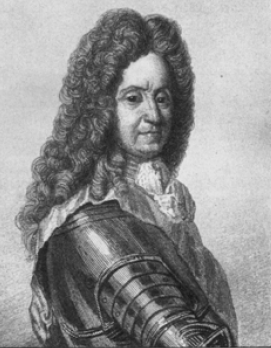

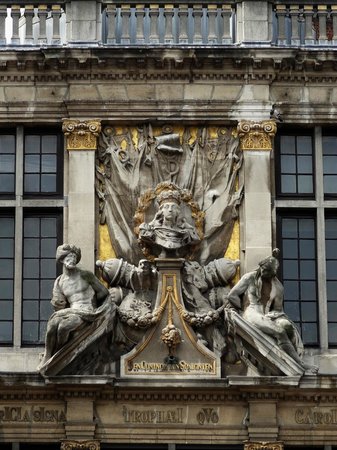

_wearing_the_fleur-de-lis_robes_as_Queen_of_France.jpg)



%2C_Grand_Pensionary_of_Holland%2C_by_Studio_of_Adriaen_Hanneman.jpg)



%2C_dit_le_Grand_Dauphin_-_Google_Art_Project.jpg)


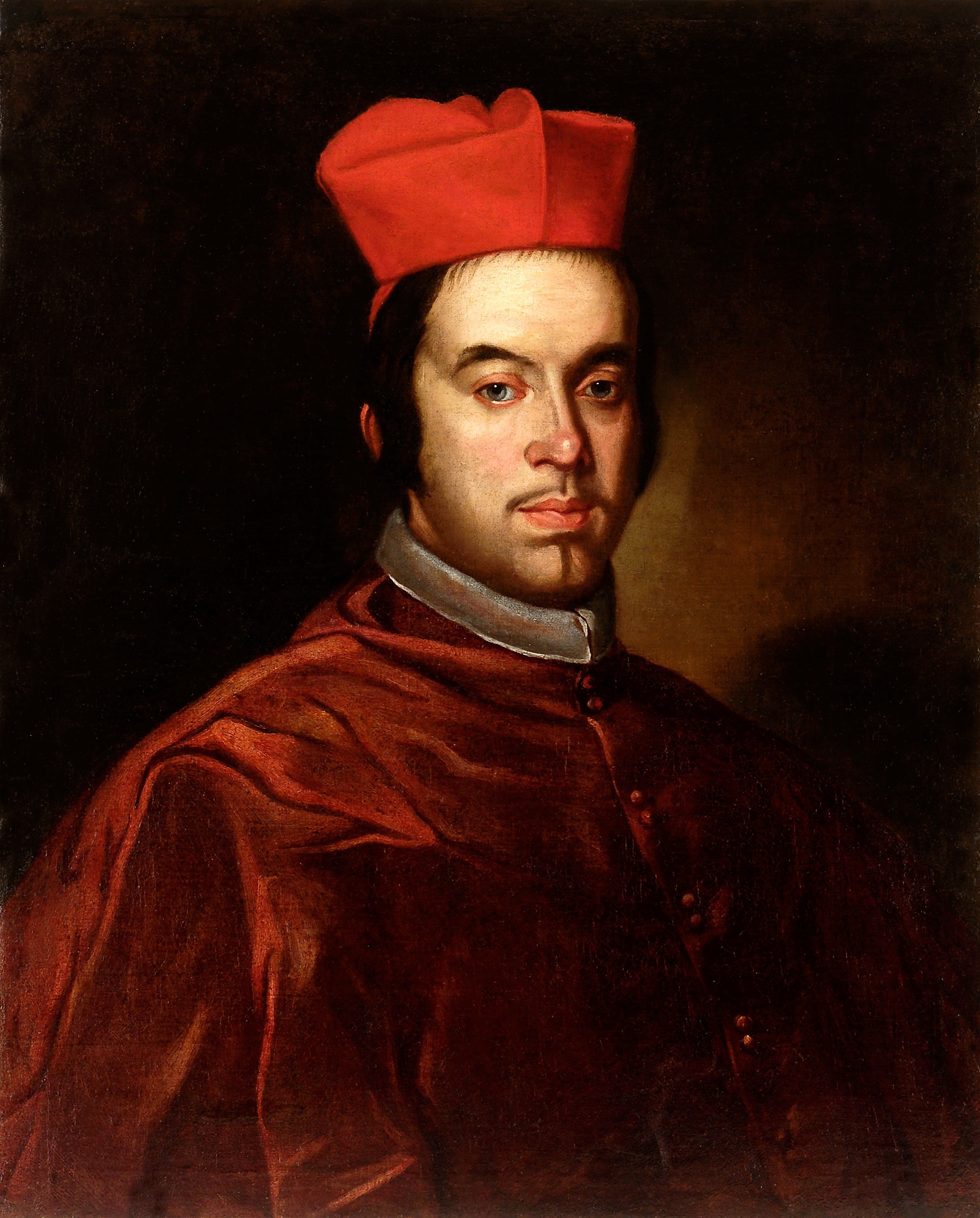
.jpg)




